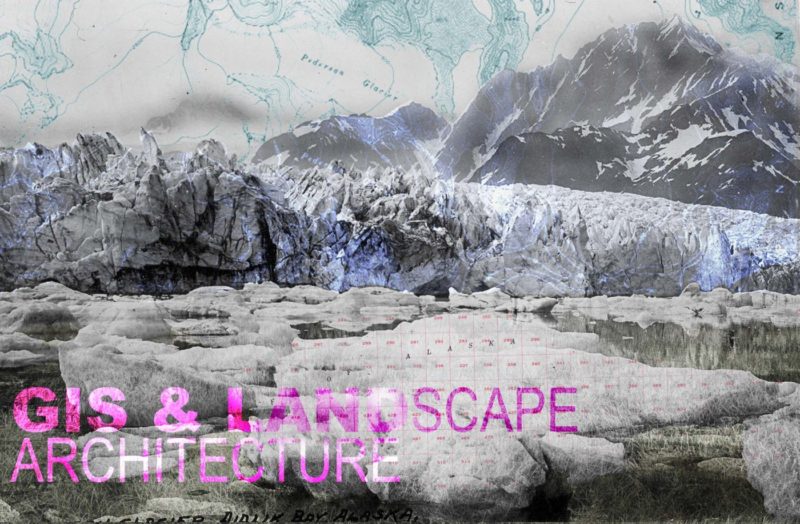Curating Change in the National Parks – Rodman
For over a thousand years, we have been creating maps. As children we are fascinated by pirate maps where ‘X’ always marks the spot, theme park maps which take us to our favorite amusement rides, maps of the stars, old school fold out road maps on family vacations, and apps which route our runs. From the Babylonians and Magellan to Ian McHarg and Jack & Laura Dangermond, the story of the map and map making is dynamically evolving.
But how are Landscape Architects utilizing maps and how does ESRI’s mapping applications fit into this picture? Here’s the low-down on the history and progression of mapping, ESRI, the use of mapping by landscape architects, and some tips for equipping yourself with ESRI’s suite of tools so that you can go out there and slay it like a pro.
HISTORY OF MAPPING & LANDSCAPE ARCHITECTURE
Map making and cartography have been around for over a century. Yet, landscape architects have not been using this as a tool since the beginning of our profession; at least not in the way one would normally think. Strictly speaking, cartography has the potential to be defined as a very specific science based on geometry and geography. Arguably, though, it doesn’t have to be, at least not entirely.
Garden designers, park designers, city planners, and landscape engineers/scientists have been each, creating their own forms of maps. If we consider maps a simple graphical representation of how we see and communicate elements of a current reality or potential reality, then we can say that these professionals have for some time, used mapping as a tool of their trade.
http://oudolf.com/process-of-making
Many examples of communicating through mapping can be found in the work of Gertrude Jekyll, Piet Oudolf, Ian McHarg, Carl Steinitz, Roger Tomlinson, Robert Moses, Fredrick Law Olmsted, and modern day designers such as James Corner, Anuradha Mathur, Charles Waldheim, Luis Callejas, Bradley Cantrell, and the firm Lateral Office. The spectrum of mapping found throughout our profession and related professions is, at the very least, enormous.
But times are a changin’ and have been for quite some time. Since the dawn of computers and electronic data our ability to quickly create, consume, analyze, and produce maps has drastically increased.
http://atlasofplaces.com/filter/landscape/Migrations-of-the-Mississippi-River
ESRI
This has never been more evident than in the past few decades with the development of GIS (Geographic Information Systems). This term and trade began to develop in the 60’s and continued to develop throughout the 70’s and 80’s. Possibly the most well-known software developer in the world, and certainly within the design profession, is ESRI (Environmental Systems Research Institute), which was founded by Jack and Laura Dangermond in 1969 and currently has more than forty-one offices around the world (Watch: Geodesign and the Emerging GIS Platform – Jack Dangermond).
ESRI’s primary application is their flagstaff program ArcGis for Desktop, which is currently in release 10.3. Programs such as ArcGis for desktop and other data management software are expanding the ability of everyday users and industry specific users such as landscape architects. ArcGis for Desktop, in it’s most simplistic form, is a hosting program for various types of data that can be layered one with the other to manage data, produce maps, analyze relationships, visualizing information, and a variety of other data driven functions. Their programs are used in a variety of industries(Commercial, Government, Natural Resources, Utilities, and more) and at least “75% of Fortune 500 companies rely on ESRI software” (ESRI). With the belief that “geography can make the world a better place,” they are arming hundreds of thousands of people with the tools and information to create and bring change to their communities.
http://epd372.blogspot.com/2010_10_01_archive.html
But what does this mean for Landscape Architects? Will we actually create anything different, new, relevant, or controversial? How will our maps introduce education and change? Let’s take a look at a few ways in which GIS is being used which would benefit the profession of landscape architecture. Here we go!
WHERE WE ARE NOW
With the proposed Anthropocene underway, we find our cities and natural environments in an ever evolving state of flux. Understanding these current changes, foreseeing future changes, and chronicling our history has never been more important. Landscape architects are now required to more closely work with outside disciplines. GIS is providing us with a common vocabulary that bridges the gap between professional languages. We are also continuing to work alongside planners,developers, health and human services,scientists,engineers,governments,corporations, andinstitutions; all of which use GIS to inform their decisions.
Armed with this common tool and language, we are incorporating this knowledge into our designs and our research. This is important as many clients want to prove a return-on-investment (ROI). But this can be difficult to promise solely based on the output from GIS. Like many areas in the professional world, some assume that since we use data to derive a result or plan, the logical product is a scientific result that is absolute and reproducible. This is not always the case. Sometimes, you can put hard data into a computer and get complete junk out the other side, especially if you don’t know what you are doing (say for instance if you use the wrong projection). But that has never stopped progress before though, right?
A current change underway is how we share and make available information. While some aren’t on board, many are contributing to and reaping the benefits of ‘Big Data’. Big Data, according to a quick Google search (a big data company), reveals ‘Big Data’ as ‘extremely large data sets that may be analyzed computationally to reveal patterns, trends, and associations, especially relating to human behavior and interactions.” <Google> This citation is a case in point about how Big Data is changing our culture and the quality of our work. The prevalence of various sources of information on the web increases the chance of incorrect information or the misuse and misunderstanding of what ‘good’ data is. We are simply accepting data sources as authoritative and accurate. This is one of the many arguments against big data.
http://proceedings.esri.com/library/userconf%20/seuc16/papers/seruc_63.pdf
But does that cancel out the value of big data? Not entirely. In decades past, our cultures have approached information as a capitalistic commodity. Whoever has the most knowledge, has power. But this too is changing. In the design profession, we hold close our information and many forgo sharing knowledge and experience with the belief that our place of experience will be the one thing that elevates our status or secures our next project. Open data is changing this entirely.
Open data is a basic concept that data is freely shared with the public. A perfect example of this is the quickly emerging ‘open data’ websites amongst counties, cities, states, nations, corporations…the list goes on. We are finding authoritative data that is free to use in our projects. Need a street center line as a shapefile? Got it! Need to stream a WMS cached aerial of the state? Boom! How about current weather, demographics, or crime stats? Available! You can even pull open data from multiple sources to find where people are jogging the most, what people are tagging in their photos, and from where. So say you are redesigning a four-mile stretch along the Anacostia River and want to use social media as a collector. What are people looking at? Maybe that is your design focus. Where from? That could be the priority public space to improve. So, what programs should you learn and how are they going to benefit you?
QUICK RECAP OF PROGRAMS FOR USE BY LANDSACPE ARCHITECTS
There are dozens of ESRI applications out there now. Most of them are great, many of them are not relevant to Landscape Architects. Most schools even have free licenses for students, and individuals can get a single license or multiple. We’ll just name a few here.
- ArcMap | ArcGis for Desktop – Think of this as your home base from where you can set up just about everything else.
- Collector – Simply put, collector is one of the most valuable tools that you can get if you are collecting inventory and analysis.
Stewart Inc. – South Prong Clark Creek Greenway Alignment Study
- ArcGis Explorer – View maps, chose base maps, add local data.
- ArcGis Earth – Think Google earth now integrate your mapping and design into real world, 3d atmospheres.
- ESRI – Story Maps – Tell a story with an interactive public facing platform that integrates your maps live. (Click here for an example from Stewart Inc. for the ‘Uptown Urban Trail Connections Study’.)
Uptown Urban Trail Connection Study
- Drone2Map – Complete land analysis, collect imagery, and more. This is huge considering the FAA’s new rulings!
- Survey123 – Stream your workflow, stay connected to your team, and do it all with smart mapping.
- ArcGis Maps for Adobe Creative Cloud – It doesn’t get any better than this for designers. Integration with Adobe!
MAKE MAPS!!!
Don’t let our list stop you from exploring. You can find even more applications on ESRI’s website. Be sure to search the web for various examples of maps. Here is a pinterest collection that I keep handy for map reference. If you are interested in learning about these, check out this articles’ associated links and tell us how you use GIS. Keep an eye out for future articles covering GIS software in more depth. For now, get out there and map!
—
Cameron R. Rodman Associate ASLA, is a Landscape Designer at Stewart Inc., a multi-disciplinary design firm in Charlotte, NC. Cameron is also currently a writer for Land8.com and writes on a variety of topics including event coverage, GIS awareness, book reviews, and current landscape architecture designs. Cameron recently completed a year long term as the National Student Representative to the ASLA Board of Trustees where he enhanced social media communications, chapter president training, and student-professional engagement. Cameron’s current work includes a variety of projects ranging in site scale and programming requirements. At Stewart Inc., Cameron is helping lead the development and implementation of GIS tools as a means of site analysis, site design, storytelling, and public engagement. .











